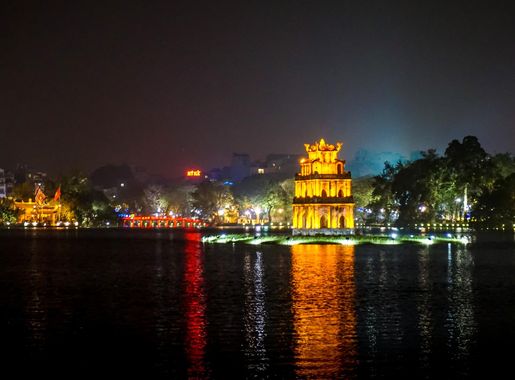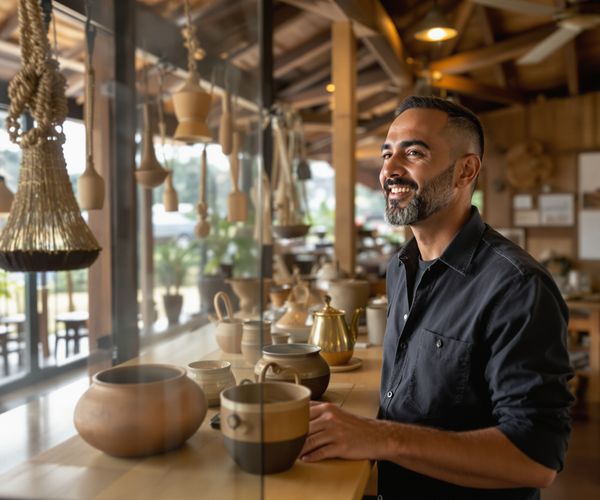
Buon Ma Thuot: The Heart of Vietnam’s Central Highlands
Discover Buon Ma Thuot, Vietnam’s coffee capital, rich in cultural heritage, natural beauty, and unique culinary delights in the heart of the Central Highlands.
Nestled in the Central Highlands of Vietnam, Buon Ma Thuot is a city rich in cultural heritage and natural beauty. Known as the coffee capital of Vietnam, its lush plantations produce some of the finest coffee in the world. As you wander through the city, you will encounter vibrant markets, historical sites, and charming cafes that offer a taste of local life. The Dak Lak Museum is a must-visit for history enthusiasts, showcasing the diverse cultures of the region’s ethnic groups. Nearby, the Ethnographic Museum provides a deeper understanding of the indigenous Ede and M'nong tribes. For those who love nature, the stunning Dray Nur and Dray Sap waterfalls offer a perfect escape into the wilderness. The Yok Don National Park, one of Vietnam’s largest nature reserves, is ideal for trekking and wildlife spotting. Buon Ma Thuot also offers a unique culinary experience. From traditional dishes like 'banh canh' (a thick noodle soup) to exotic treats such as 'sầu riêng' (durian), the city's food scene is sure to delight your taste buds. Don't forget to try the local coffee, either black or with condensed milk, in one of the many cozy cafes. Whether you are a history buff, nature lover, or a food enthusiast, Buon Ma Thuot has something special to offer.
Local tips in Buon Ma Thuot
- Visit during the dry season (November to April) for the best weather conditions.
- Hire a local guide for a richer experience and insights into the culture and history.
- Try the local coffee at Trung Nguyen Coffee Village for an authentic taste.
- Wear comfortable shoes for exploring the city and its natural attractions.
- Respect local customs and traditions, especially when visiting ethnic villages.
Buon Ma Thuot: The Heart of Vietnam’s Central Highlands
Nestled in the Central Highlands of Vietnam, Buon Ma Thuot is a city rich in cultural heritage and natural beauty. Known as the coffee capital of Vietnam, its lush plantations produce some of the finest coffee in the world. As you wander through the city, you will encounter vibrant markets, historical sites, and charming cafes that offer a taste of local life. The Dak Lak Museum is a must-visit for history enthusiasts, showcasing the diverse cultures of the region’s ethnic groups. Nearby, the Ethnographic Museum provides a deeper understanding of the indigenous Ede and M'nong tribes. For those who love nature, the stunning Dray Nur and Dray Sap waterfalls offer a perfect escape into the wilderness. The Yok Don National Park, one of Vietnam’s largest nature reserves, is ideal for trekking and wildlife spotting. Buon Ma Thuot also offers a unique culinary experience. From traditional dishes like 'banh canh' (a thick noodle soup) to exotic treats such as 'sầu riêng' (durian), the city's food scene is sure to delight your taste buds. Don't forget to try the local coffee, either black or with condensed milk, in one of the many cozy cafes. Whether you are a history buff, nature lover, or a food enthusiast, Buon Ma Thuot has something special to offer.
When is the best time to go to Buon Ma Thuot?
Iconic landmarks you can’t miss
Dray Nur Waterfall
Experience the breathtaking beauty and cultural richness of Dray Nur Waterfall, a must-visit destination in Dak Lak, Vietnam, perfect for nature lovers and adventurers.
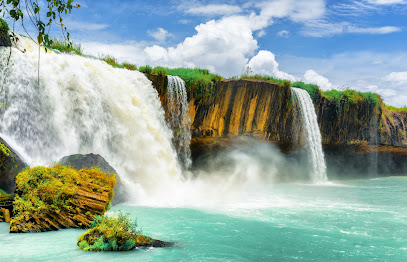
The World Coffee Museum
Explore the fascinating journey of coffee at The World Coffee Museum in Buôn Ma Thuột, Vietnam, where history and flavor unite.

Kotam Community Resort
Discover the beauty and tranquility of Kotam Community Resort in Dak Lak, a perfect escape for nature lovers and cultural enthusiasts alike.
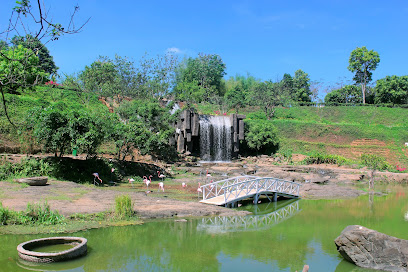
Buon Ma Thuot Victory Monument
Discover the Buon Ma Thuot Victory Monument, a historic landmark that celebrates Vietnam's resilience amidst breathtaking scenery and rich cultural heritage.
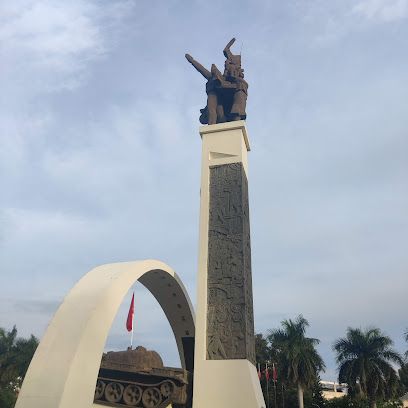
Muong Thanh Luxury Buon Ma Thuot hotel
Discover unparalleled luxury and comfort at Muong Thanh Luxury Buon Ma Thuot Hotel, your gateway to Vietnam's coffee capital.
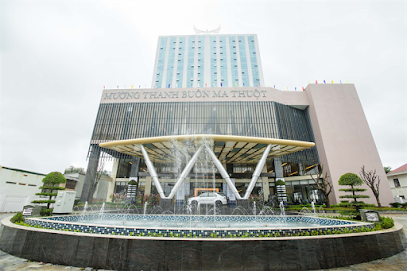
Buon Ma Thuot Airport
Explore the rich culture and natural beauty of Vietnam's Central Highlands through Buon Ma Thuot Airport, the gateway to your coffee adventure.
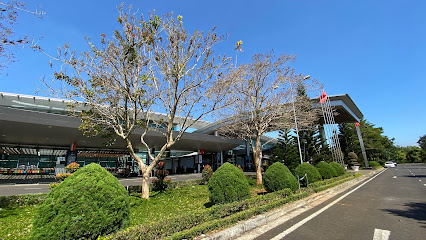
Roman Catholic Diocese of Ban Mê Thuột
Discover the architectural beauty and spiritual serenity of the Roman Catholic Diocese of Ban Mê Thuột in the heart of Vietnam's Dak Lak province.
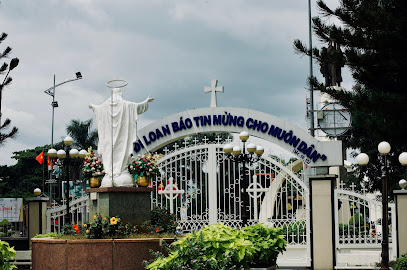
Trohbu Botanic Garden
Discover the serene beauty of Trohbu Botanic Garden in Dak Lak, where lush flora and tranquil surroundings await every visitor.
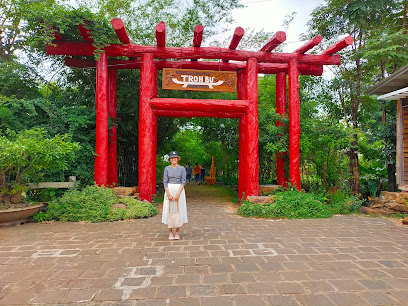
Dak Lak Museum
Explore the captivating history and culture of Vietnam's Central Highlands at Dak Lak Museum in Buôn Ma Thuột.
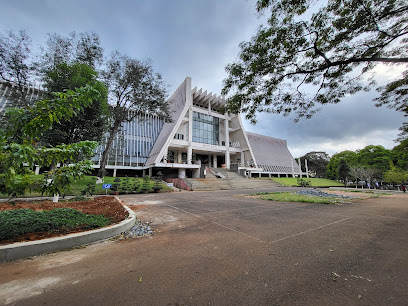
House exiled Ban Me Thuot
Discover the House Exiled Ban Me Thuot, a captivating historical site in Buon Ma Thuot that narrates Vietnam's rich cultural heritage and historical journey.
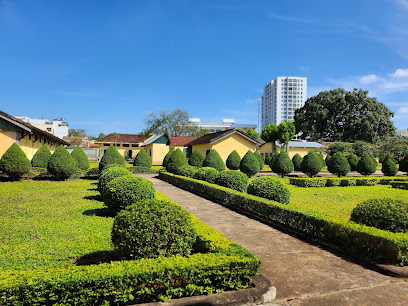
Buon Ma Thuot Square
Explore Buon Ma Thuot Square, a vibrant park in Dak Lak, Vietnam, where culture, nature, and community blend seamlessly for an unforgettable experience.
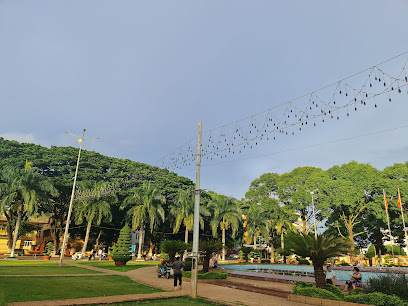
Bao Dai's Palace
Discover the rich history of Vietnam at Bao Dai's Palace, a majestic site reflecting the grandeur of the last emperor's reign.
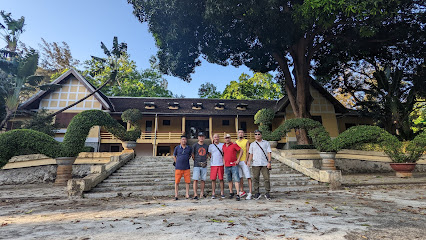
Mau Than memorial
Discover the Mau Than Memorial in Buon Ma Thuot, a historical landmark honoring Vietnam's brave warriors and a serene spot for reflection.

Nhà Ở Xã Hội Buôn Ma Thuột
Discover the vibrant culture and rich heritage of Buôn Ma Thuột at Nhã Đề Xã Hội, where local charm meets modern living.
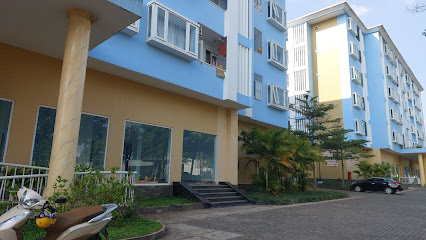
Di tích nhà tù Buôn Ma Thuột
Explore the fascinating history of Buôn Ma Thuột at this local museum, a treasure trove of cultural artifacts and stories waiting to be uncovered.

Unmissable attractions to see
Trung Nguyen Coffee Village
Discover the rich heritage of Vietnamese coffee at Trung Nguyen Coffee Village, a unique blend of culture, taste, and stunning landscapes in Dak Lak.
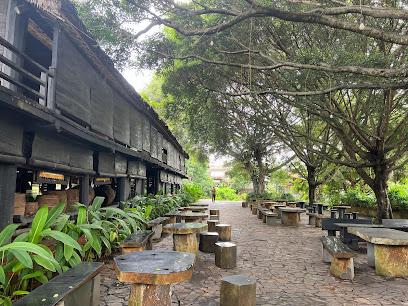
Đray Nur Waterfall
Experience the breathtaking beauty of Dray Nur Waterfall, a stunning natural gem in Dak Lak, Vietnam, perfect for adventure and relaxation.
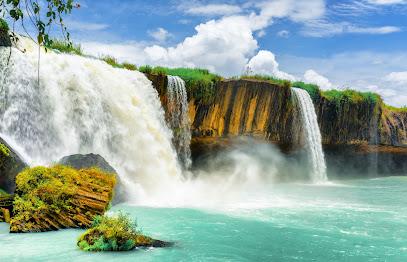
Kotam Community Resort
Explore the serene beauty of Kotam Community Resort in Dak Lak, a perfect retreat for relaxation and adventure amid Vietnam's stunning landscapes.
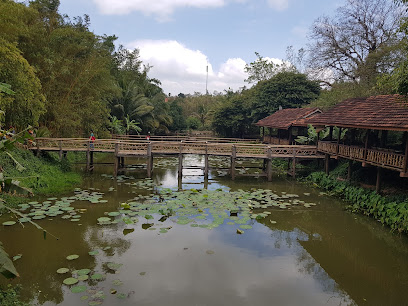
Đắk Lắk Museum
Explore the captivating history and culture of Vietnam's Central Highlands at Dak Lak Museum, a must-visit for every traveler.
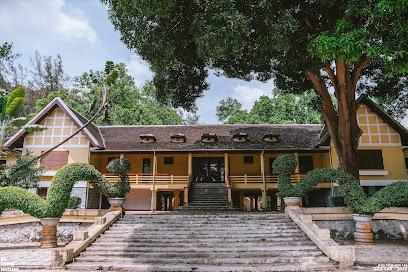
Thác Đray Sáp
Explore the stunning beauty of Thác Đray Sáp Waterfall in Dak Nong, Vietnam – a breathtaking natural escape into lush landscapes and serene waters.
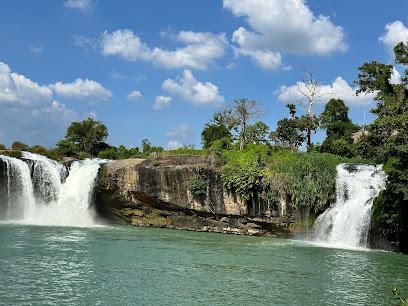
Trohbu Botanic Garden
Explore the natural beauty and tranquility of Trohbu Botanic Garden, a lush oasis in Dak Lak, Vietnam, perfect for nature lovers and peaceful retreats.
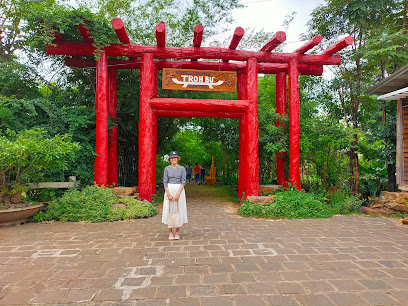
Khu Du lịch Sinh thái Văn hóa Cụm Thác Đray Sáp - Gia Long
Explore the breathtaking Dray Sap Waterfall in Dak Nong, Vietnam, an ecotourism gem showcasing stunning natural landscapes and rich cultural heritage.
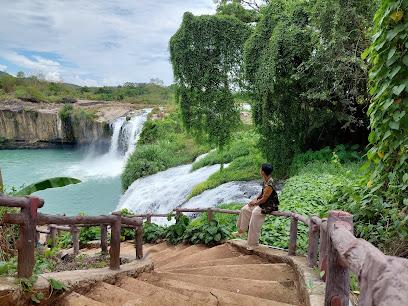
Lắk Lake
Discover the tranquil beauty and cultural richness of Lăk Lake in Dak Lak, Vietnam, a perfect retreat for nature lovers and adventure seekers.
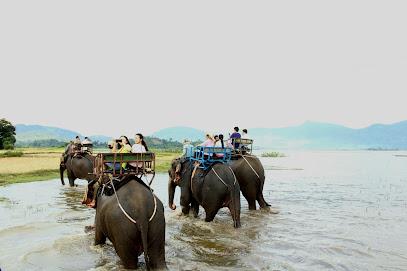
Water Park in Dak Lak
Discover a thrilling water wonderland in Dak Lak, featuring exciting slides, relaxing pools, and family-friendly fun for all ages.
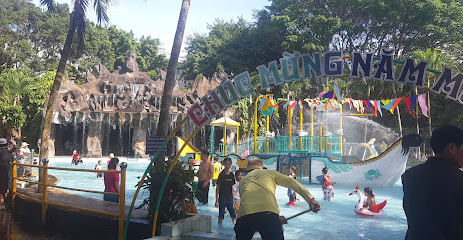
Bee Stream Tourist Area
Experience the serene beauty and delightful flavors of Bee Stream Tourist Area, a hidden gem in Dak Lak, Vietnam, perfect for nature lovers and food enthusiasts.
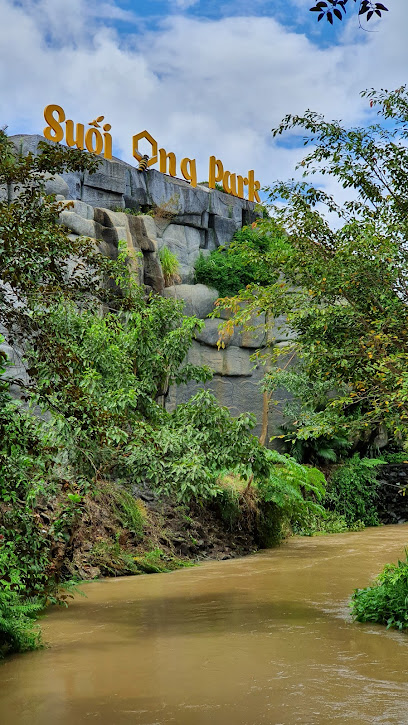
Bao Dai's Palace
Explore Bao Dai's Palace in Buon Ma Thuot: A beautiful blend of history, architecture, and nature in the heart of Dak Lak, Vietnam.
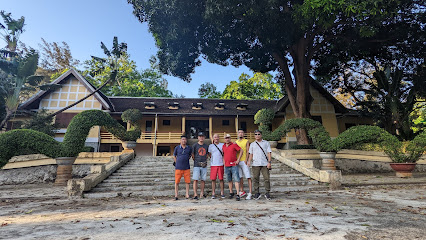
Mộc Garden BMT
Discover the serene charm of Mộc Garden BMT in Buôn Ma Thuột, Vietnam—a peaceful retreat amidst lush greenery and delightful local cuisine.
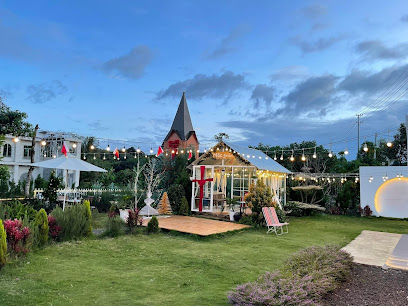
Công viên
Experience the tranquility of Công viên, a lush park in Buôn Ma Thuột, perfect for relaxation and leisurely exploration in Vietnam's scenic heart.

Serepok Garden - Khu Du Lịch Sinh Thái
Explore the beauty of Serepok Garden, an eco-tourism gem in Dak Lak, Vietnam, blending nature, culture, and adventure for an unforgettable experience.
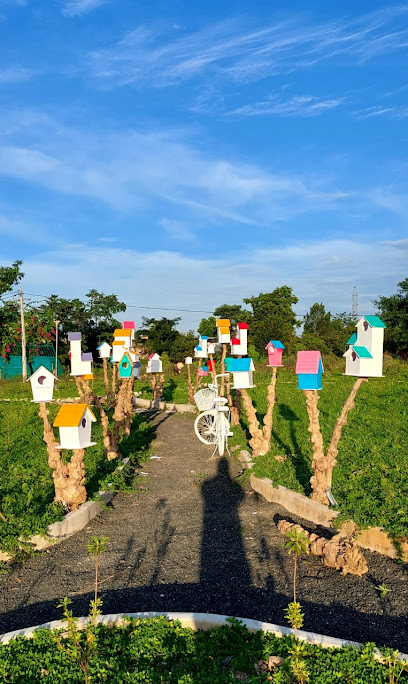
Di tích nhà tù Buôn Ma Thuột
Uncover the poignant history of Vietnam at Di tịch nhà tù Buôn Ma Thuột, a local museum dedicated to the stories of resilience and struggle.

Essential places to dine
ARUL HOUSE
Experience authentic Vietnamese cuisine and exceptional coffee at Arul House in Buon Ma Thuot – a culinary gem blending tradition and flavor.
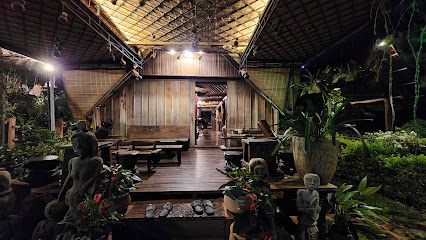
Bò Nhúng Me Cà Te Quán
Experience authentic Vietnamese cuisine at Bò Nhúng Me Cà Te Quán in Buôn Ma Thuột - where tradition meets flavor in every bite.
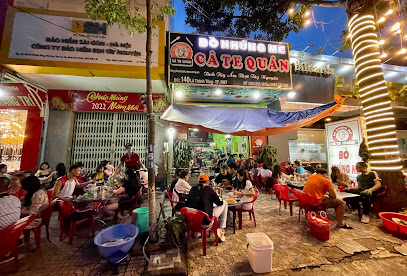
Cơm Nhà Restaurant
Experience authentic Vietnamese cuisine at Cơm Nhà Restaurant in Buôn Ma Thuột – where flavor meets tradition.
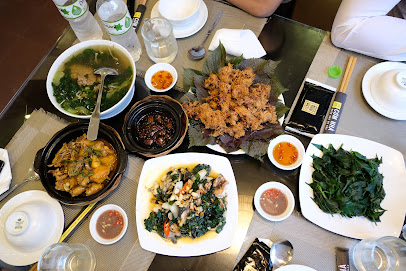
Chef' Table
Experience authentic Italian cuisine at Chef's Table in Buôn Ma Thuột - where tradition meets flavor in every bite.
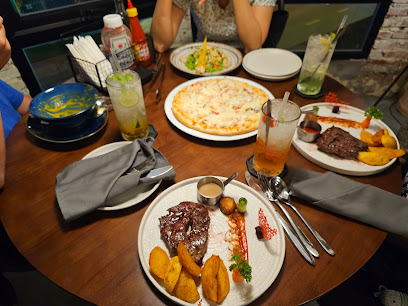
Nhà Hàng Phố Núi
Experience authentic Vietnamese cuisine at Nhà Hàng Phố Núi in Buôn Ma Thuột – a culinary gem blending tradition with taste.
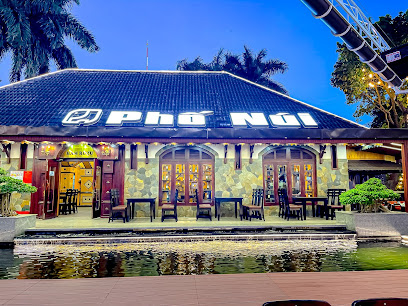
Pho Thin Bo Ho
Experience authentic Vietnamese flavors at Pho Thin Bo Ho - where every bowl tells a story.
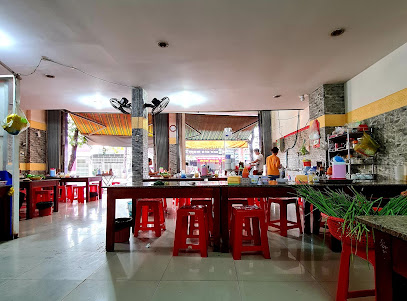
Thịt Trâu Vi Tiếp
Experience authentic Vietnamese cuisine at Thịt Trâu Vi Tiếp with delicious buffalo meat specialties in Buon Ma Thuot.
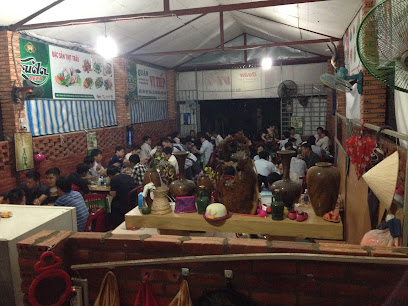
Quán Nhậu Cây Bàng
Experience authentic Vietnamese cuisine at Quán Nhậu Cây Bàng in Buôn Ma Thuột - where every meal is a celebration.
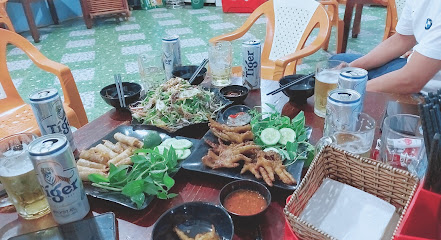
Atrani Bistro Buôn Mê Thuột
Discover the rich flavors of Vietnam at Atrani Bistro in Buôn Mê Thuột - where local ingredients meet culinary creativity.
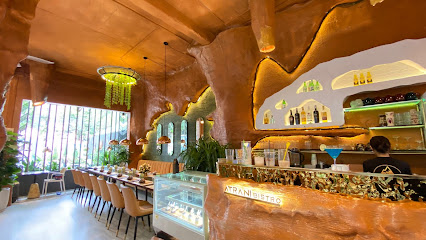
Quán Mẹ Phích
Discover authentic Vietnamese flavors at Quán Mẹ Phích – a family-friendly restaurant in Buôn Ma Thuột perfect for all ages.
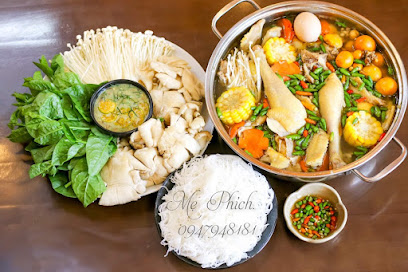
Bún Bò Huế CỐ ĐÔ - Trung tâm ẩm thực Huế tại Buôn Ma Thuột
Experience authentic Huế cuisine at Bún Bò Huế CỐ ĐÔ in Buôn Ma Thuột - A must-visit for food enthusiasts seeking rich flavors.

Hải sản Biển Đông
Savor the freshest seafood dishes at Hải sản Biển Đông in Buôn Ma Thuột, where vibrant flavors meet authentic Vietnamese hospitality.
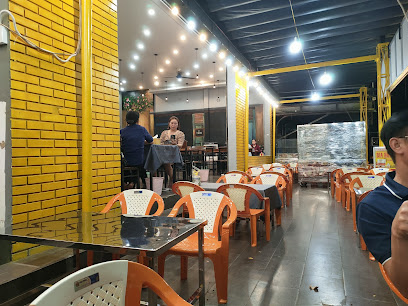
Kề Fa Cà Fê
Discover the charm of Kề Fa Cà Fê - your cozy escape for authentic Vietnamese coffee and local delicacies in Buôn Ma Thuột.
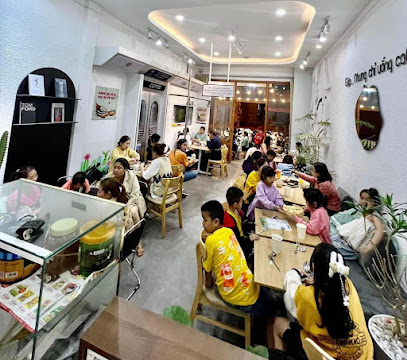
PHỞ NHẬT TÂM
Discover authentic Vietnamese flavors at PHỞ NHẬT TÂM in Buôn Ma Thuột – home of delicious phở and local delights.
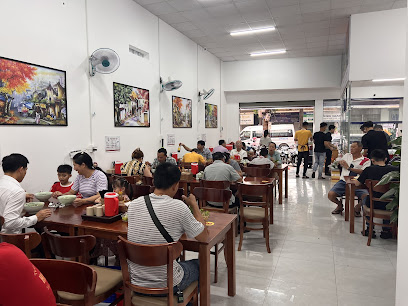
Quán Cơm Phụng
Discover authentic Vietnamese flavors at Quán Cơm Phụng in Buôn Ma Thuột - a charming bistro and hawker stall perfect for food lovers.
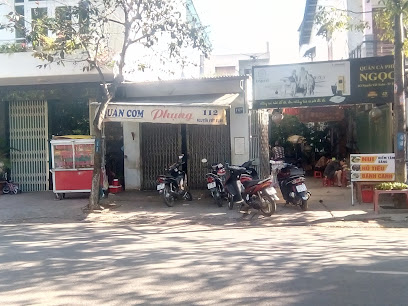
Markets, malls and hidden boutiques
GO! Buôn Ma Thuột
Experience local culture and modern shopping at GO! Buôn Ma Thuột, where vibrant markets meet daily essentials in the heart of Dak Lak.
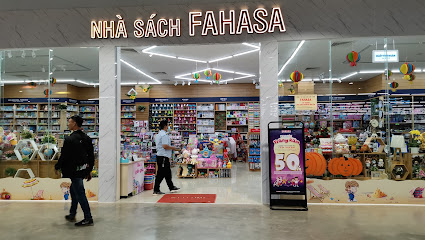
Vincom Plaza Buôn Ma Thuột
Experience the blend of modern shopping and local culture at Vincom Plaza Buôn Ma Thuột, your ultimate destination in Dak Lak.
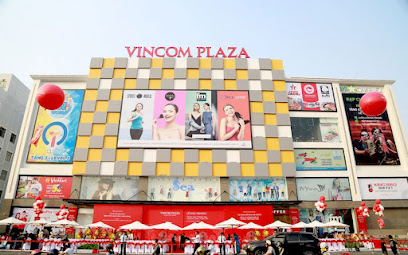
MM Mega Market Buôn Ma Thuột
Experience the vibrant shopping culture at MM Mega Market Buôn Ma Thuột, where local flavors and global products come together.
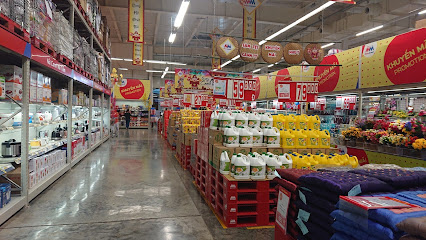
RubyStore1994
Experience the best of Buôn Ma Thuột with stylish footwear from RubyStore1994, a premier shoe store showcasing fashion and comfort.
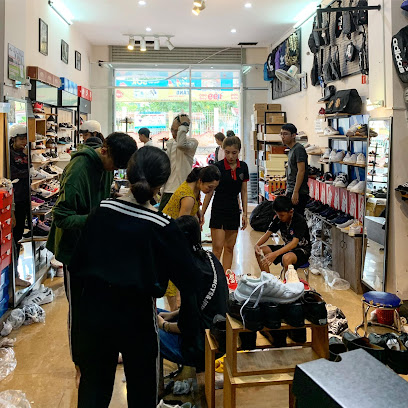
Baystore 2
Explore Baystore 2 in Buôn Ma Thuột for a unique selection of collectibles that embody Vietnam's rich culture and artistic heritage.
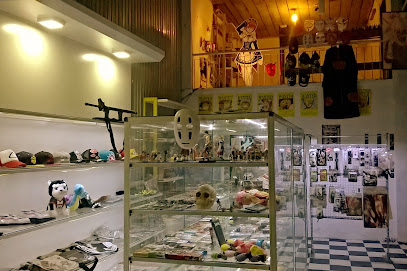
14AM Boutique - Đồ thể thao Đồ tập Gym yoga- Giày dép nam nữ đẹp BMT
Explore 14AM Boutique in Buon Ma Thuot for stylish sportswear, footwear, and children's clothing in a welcoming, community-driven environment.
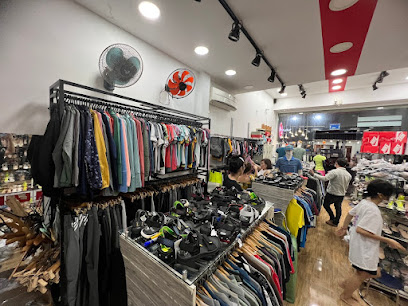
VJShop
Discover top-quality cameras and expert advice at VJShop, the go-to destination for photography enthusiasts in Buôn Ma Thuột, Vietnam.
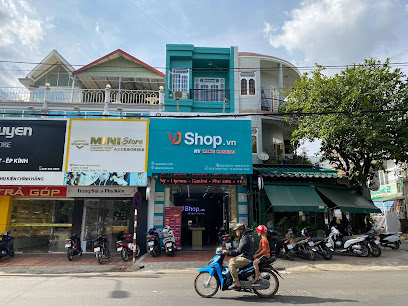
Tú Linh Boutique
Discover exquisite bridal fashion at Tú Linh Boutique, where elegance meets personalized service in Buôn Ma Thuột.
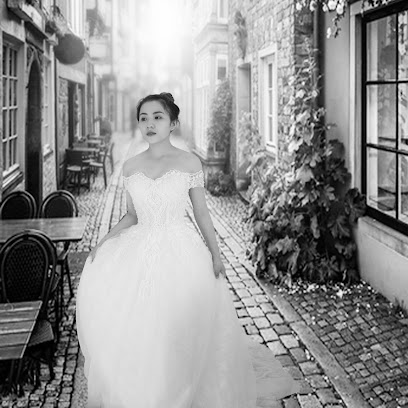
Home Decor & Gifts corner
Explore the unique offerings at Home Decor & Gifts Corner in Buon Ma Thuot, where culture meets creativity in every handcrafted item.
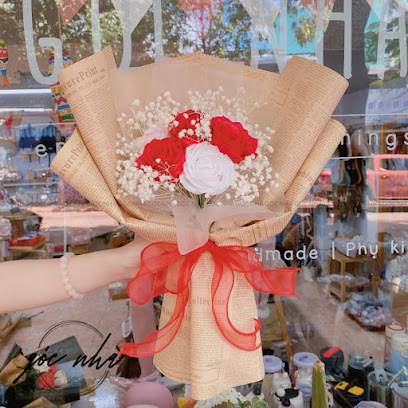
Shop An Nhiên - Trang sức, phụ kiện, văn phòng phẩm POP it bmt
Explore the unique charm of Shop An Nhiên in Buôn Ma Thuột, where you can find the perfect gifts and accessories to remember your journey.
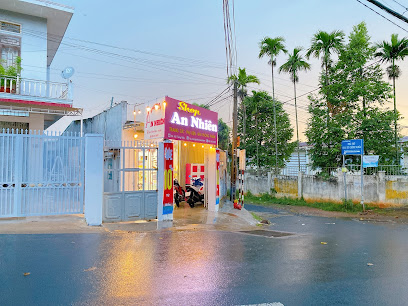
PQ SHOP
Explore the vibrant fashion scene at PQ SHOP in Buôn Ma Thuột, where local culture meets modern style in a delightful shopping experience.
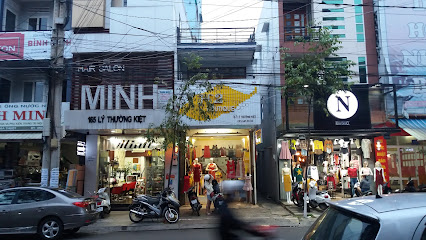
ELLY Buôn Ma Thuột Đăk Lăk
Discover unique fashion accessories at ELLY in Buôn Ma Thuột, blending local craftsmanship with modern design for the perfect travel keepsake.
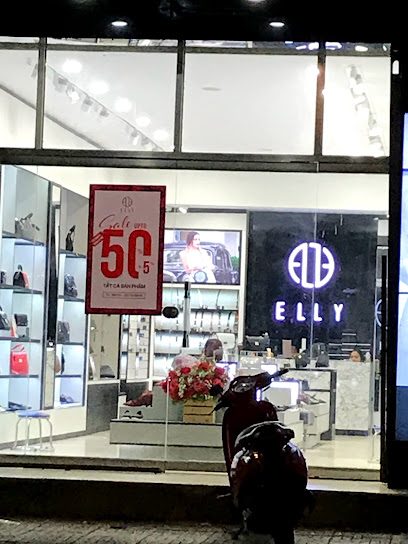
Shop Hà Linh - Chuyên sỉ & lẻ trang sức, phụ kiện
Discover unique jewelry and accessories at Shop Hà Linh in Buôn Ma Thuột, showcasing the beauty of Vietnamese craftsmanship.

Shop Kiều Châu chuyên đồ thiết kế
Discover unique Vietnamese fashion at Shop Kiều Châu, where quality craftsmanship meets contemporary style in Buôn Ma Thuột.

LaMy shop
Discover LaMy Shop in Buon Ma Thuot, where unique footwear meets Vietnamese charm in a warm and inviting atmosphere.
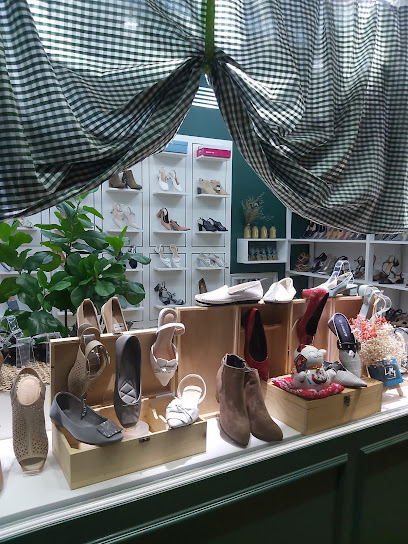
Essential bars & hidden hideouts
420 Pub
Experience the vibrant nightlife of Buôn Ma Thuột at 420 Pub, where great drinks and lively entertainment await.
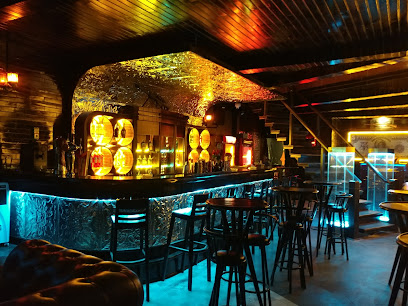
Liberty Bar Club
Experience the vibrant nightlife at Liberty Bar Club, the ultimate bar destination in Buon Ma Thuot for live music and local drinks.
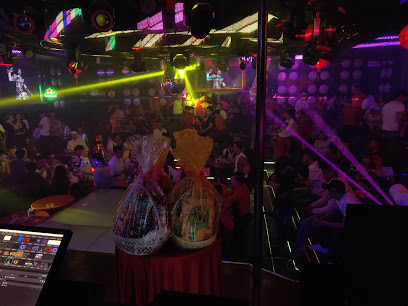
TENDERLY BAR
Experience exquisite cocktails and a vibrant atmosphere at Tenderly Bar, the ultimate cocktail destination in Buôn Ma Thuột.
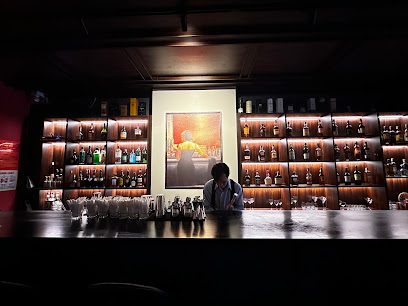
Friends Night Club
Discover the vibrant nightlife at Friends Night Club in Buôn Ma Thuột, where music, dance, and a lively atmosphere await every night.
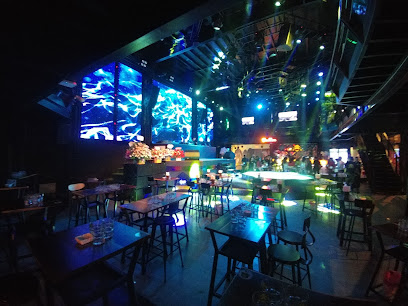
47 Club
Discover the vibrant nightlife at 47 Club in Buôn Ma Thuột - a must-visit bar for cocktails, music, and unforgettable fun.
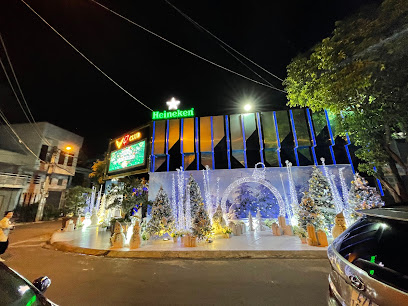
Ngã 6 Pub
Experience the vibrant nightlife and exquisite flavors at Ngã 6 Pub in Buôn Ma Thuột, Vietnam's hidden gem for cocktails and local cuisine.
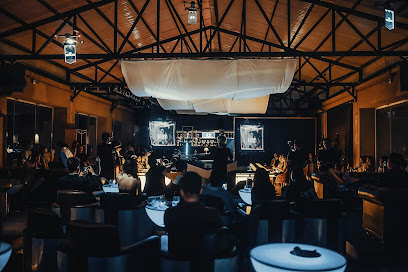
Monaco Club ( Quán Bar - Vũ Trường)
Experience the vibrant nightlife of Buôn Ma Thuột at Monaco Club, where great music and delicious drinks create unforgettable memories.
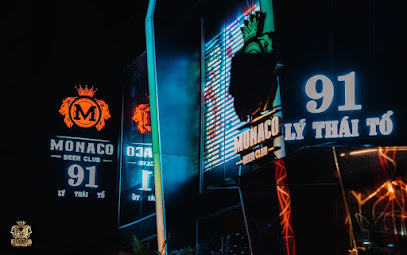
Moon Bar & Grill
Experience the best of Vietnamese grilling and cocktails at Moon Bar & Grill in Buôn Ma Thuột, where every meal is a celebration of flavor.
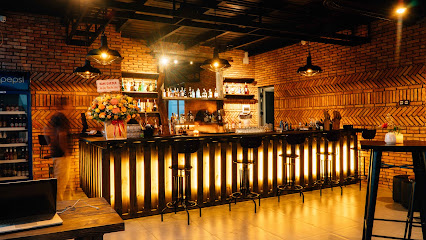
Thị cafe & pub
Discover the vibrant blend of café and nightlife at Thị Cafe & Pub in Buôn Ma Thuột, Vietnam – where local flavors meet warm hospitality.
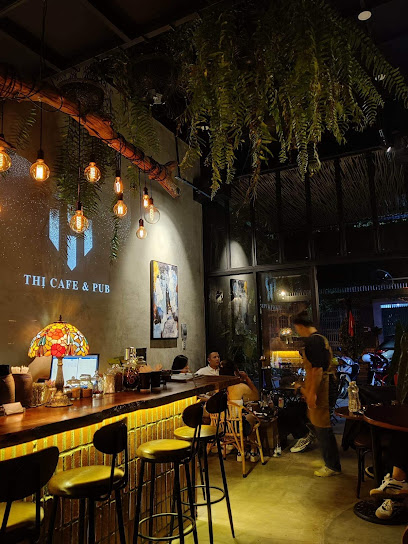
Tuấn Vũ Club
Experience the vibrant nightlife of Buôn Ma Thuột at Tuấn Vũ Club, where local culture meets a lively bar atmosphere.

Neko Rooftop Coffee & Beer
Experience the best of Buon Ma Thuot at Neko Rooftop Coffee & Beer, where stunning views meet exceptional coffee and craft beer.
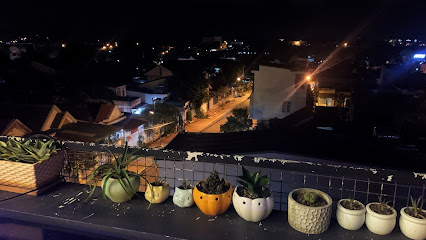
NOAH ROOFTOP
Discover the lively atmosphere and stunning views at NOAH ROOFTOP, the must-visit cocktail bar in Buôn Ma Thuột, Vietnam.
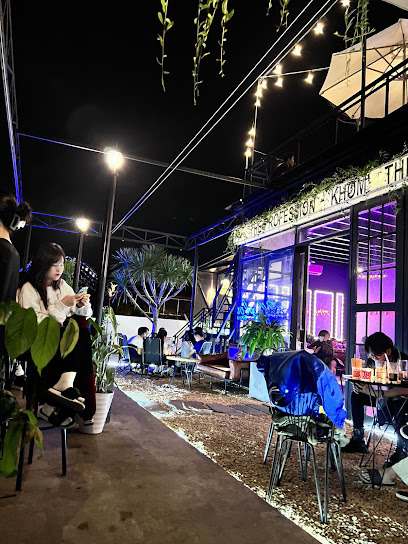
Rooftop Bar
Experience breathtaking views and vibrant nightlife at the Rooftop Bar in Buôn Ma Thuột, where every sip is accompanied by stunning cityscapes.
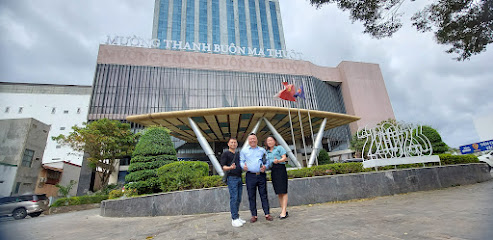
Bà Lệ
Discover the vibrant nightlife at Bà Lệ, a lively bar in Buôn Ma Thuột, offering a unique blend of local and international flavors.
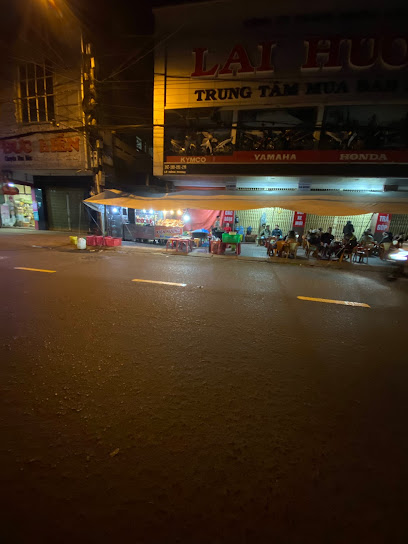
Fantasy Lounge
Experience the vibrant nightlife of Buôn Ma Thuột at Fantasy Lounge, where delicious drinks and a lively atmosphere await.

Travel experiences inspired by this city
Explore more travel diariesLocal Phrases
-
- HelloXin chào
[sin chow] - GoodbyeTạm biệt
[tam byet] - YesCó
[gaw] - NoKhông
[khome] - Please/You're welcomeXin vui lòng
[sin vwee long] - Thank youCảm ơn
[gam uhn] - Excuse me/SorryXin lỗi
[sin loy] - How are you?Bạn khỏe không?
[ban kweh khome?] - Fine. And you?Khỏe. Còn bạn?
[kweh. kawn ban?] - Do you speak English?Bạn nói tiếng Anh không?
[ban noy tieng ang khome?] - I don't understandTôi không hiểu
[toy khome hee-yeu]
- HelloXin chào
-
- I'd like to see the menu, pleaseTôi muốn xem thực đơn, làm ơn
[toy moon sem took don, lam uhn] - I don't eat meatTôi không ăn thịt
[toy khome uhn tit] - Cheers!Chúc sức khỏe!
[chuck sook kweh] - I would like to pay, pleaseTôi muốn thanh toán, làm ơn
[toy moon tung twan, lam uhn]
- I'd like to see the menu, pleaseTôi muốn xem thực đơn, làm ơn
-
- Help!Cứu!
[kyoo] - Go away!Đi đi!
[dee dee] - Call the Police!Gọi cảnh sát!
[goy kane sat] - Call a doctor!Gọi bác sĩ!
[goy bak see] - I'm lostTôi bị lạc đường
[toy bee lak doo-ong] - I'm illTôi ốm
[toy ohm]
- Help!Cứu!
-
- I'd like to buy...Tôi muốn mua...
[toy moon mwa] - I'm just lookingTôi chỉ xem
[toy chee sem] - How much is it?Bao nhiêu tiền?
[bow nyew tee-en?] - That's too expensiveĐắt quá
[dat kwa] - Can you lower the price?Bạn có thể giảm giá không?
[ban kaw te ziam zaw khome?]
- I'd like to buy...Tôi muốn mua...
-
- What time is it?Mấy giờ rồi?
[mai yaw roy?] - It's one o'clockMột giờ
[moot yaw] - Half past (10)Mười giờ nửa
[moo-ee yaw nwa] - MorningBuổi sáng
[boy sang] - AfternoonBuổi chiều
[boy chew] - EveningBuổi tối
[boy toy] - YesterdayHôm qua
[home kwa] - TodayHôm nay
[home nai] - TomorrowNgày mai
[ngai mai] - 1Một
[moot] - 2Hai
[high] - 3Ba
[bah] - 4Bốn
[bun] - 5Năm
[nahm] - 6Sáu
[sow] - 7Bảy
[by] - 8Tám
[tahm] - 9Chín
[cheen] - 10Mười
[moo-ee]
- What time is it?Mấy giờ rồi?
-
- Where's a/the...?Ở đâu có...
[uh dow kaw] - What's the address?Địa chỉ là gì?
[dee-a chee la zee?] - Can you show me (on the map)?Bạn có thể chỉ cho tôi (trên bản đồ) không?
[ban kaw te chee cho toy (trern bun do) khome?] - When's the next (bus)?Khi nào có chuyến xe tiếp theo?
[kee now kaw chuyen seet tyeep tay-oh?] - A ticket (to ....)Một vé (đến ....)
[moot vay (den ....)]
- Where's a/the...?Ở đâu có...
History of Buon Ma Thuot
-
Buon Ma Thuot, often regarded as the capital of Vietnam's Central Highlands, was established by the indigenous Ede people long before French colonization. The city's name derives from 'Buôn Ma Thuột,' meaning 'the village of the father of Thuột,' a local Ede chieftain. The area was primarily known for its rich soil, suitable for agriculture and the cultivation of various crops, including coffee.
-
In the late 19th century, Buon Ma Thuot attracted French colonial interest due to its strategic location and fertile lands. The French established a military outpost and began exploiting the region's agricultural potential, particularly focusing on coffee plantations. This period saw the introduction of Western architectural styles and infrastructure developments, such as roads and schools.
-
Buon Ma Thuot is often referred to as the 'Coffee Capital' of Vietnam. The coffee industry began to flourish in the early 20th century under French colonial rule. The region's climate and soil conditions proved ideal for growing high-quality coffee beans, particularly the robusta variety. Today, Buon Ma Thuot is synonymous with coffee, hosting annual festivals and boasting numerous coffee shops and plantations.
-
During the Vietnam War, Buon Ma Thuot held significant strategic importance. It was the site of several key battles, including the pivotal Battle of Buon Ma Thuot in March 1975. This battle marked a turning point in the war, leading to the fall of South Vietnam. The North Vietnamese victory in Buon Ma Thuot paved the way for their rapid advance towards Saigon, culminating in the war's end.
-
After the Vietnam War, Buon Ma Thuot underwent significant reconstruction and development. The government invested in infrastructure, education, and healthcare, transforming the city into a regional economic hub. The coffee industry continued to expand, with Buon Ma Thuot becoming a central player in Vietnam's global coffee trade. Today, the city is known for its blend of traditional culture and modern amenities.
-
Buon Ma Thuot is rich in cultural heritage, particularly that of the Ede people. The city's cultural landscape is marked by traditional longhouses, gong music, and various indigenous crafts. One of the most notable cultural events is the Buon Ma Thuot Coffee Festival, held biennially, celebrating the city's coffee culture with parades, exhibitions, and tastings. Other traditional festivals, like the Gong Festival, highlight the region's ethnic diversity and cultural richness.
Buon Ma Thuot Essentials
-
Buon Ma Thuot is located in the Central Highlands of Vietnam. The nearest major airport is Buon Ma Thuot Airport (BMV), which has regular flights from major cities like Hanoi, Ho Chi Minh City, and Da Nang. Alternatively, you can take a bus from these cities, which usually takes around 7-10 hours depending on the departure point. The road trip offers scenic views of Vietnam's countryside.
-
Within Buon Ma Thuot, transportation options include taxis, motorbike taxis (xe ôm), and rental scooters. Public buses are also available but may not cover all tourist destinations. Taxis are metered and relatively affordable. If you prefer to explore at your own pace, renting a motorbike is a popular option among tourists.
-
The official currency in Vietnam is the Vietnamese Dong (VND). While credit cards are accepted in some hotels, restaurants, and shops, it is advisable to carry cash, especially for smaller establishments and street vendors. ATMs are widely available in Buon Ma Thuot, so withdrawing cash is convenient.
-
Buon Ma Thuot is generally a safe destination for tourists. However, it is advisable to take standard precautions such as avoiding poorly lit areas at night and keeping an eye on your belongings in crowded places. Certain neighborhoods might have higher petty crime rates, so always stay vigilant.
-
In case of an emergency, dial 113 for police assistance, 115 for medical emergencies, and 114 for fire emergencies. The local police station and hospitals are well-equipped to handle emergencies. It is recommended to have travel insurance that covers medical emergencies.
-
Fashion: Do dress modestly, especially when visiting religious sites. Avoid wearing revealing clothing. Religion: Do respect local customs and traditions, and always remove your shoes before entering a temple. Public Transport: Do be respectful and give up your seat to elderly passengers. Don't eat or drink on public transport. Greetings: Do greet people with a smile and a slight bow. Handshakes are also common but use both hands to show respect. Eating & Drinking: Do try local delicacies and accept food offerings graciously. Don't refuse hospitality, as it is considered impolite.
-
To experience Buon Ma Thuot like a local, visit the local markets such as Buon Ma Thuot Market where you can buy fresh produce and traditional goods. Engage with the locals, who are often friendly and willing to share stories about the city's history and culture. Don't miss visiting the Dray Nur and Dray Sap waterfalls, and take a trip to the Yok Don National Park for a unique trekking experience.
Trending Landmark in Buon Ma Thuot
-
Dray Nur Waterfall
-
The World Coffee Museum
-
Kotam Community Resort
-
Buon Ma Thuot Victory Monument
-
Muong Thanh Luxury Buon Ma Thuot hotel
-
Buon Ma Thuot Airport
-
Roman Catholic Diocese of Ban Mê Thuột
-
Trohbu Botanic Garden
-
Dak Lak Museum
-
House exiled Ban Me Thuot
-
Buon Ma Thuot Square
-
Bao Dai's Palace
-
Mau Than memorial
-
Nhà Ở Xã Hội Buôn Ma Thuột
-
Di tích nhà tù Buôn Ma Thuột
Nearby Cities to Buon Ma Thuot
-
Things To Do in Dalat
-
Things To Do in Nha Trang
-
Things To Do in Quy Nhon
-
Things To Do in Phan Thiet
-
Things To Do in Mui Ne
-
Things To Do in Kratie
-
Things To Do in Ho Chi Minh City
-
Things To Do in Vung Tau
-
Things To Do in Tam Ky
-
Things To Do in Champasak
-
Things To Do in Hoi An
-
Things To Do in Phnom Penh
-
Things To Do in Pakse
-
Things To Do in Da Nang
-
Things To Do in Can Tho





